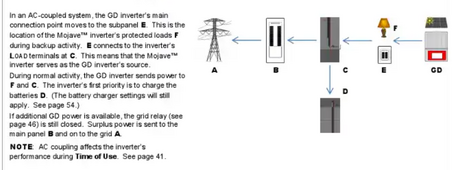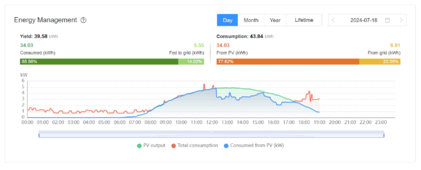Hi,
After spending a lot of time searching, i'd like to add some batteries(15kWh) to my current 6.4KW solar system, that's been running for a bout 2 years now.
Using Luna Batteries is out of the equation, the price in Europe is crazy high, about 9000$ installed myself.
So i thought about few things:
1:
2:
The cost would be approximately the same as using the stuff from Victron but i feel Victron, must be more reliable?
Also i would be able to add more panel down the line, or at least, not as easily as i won't be able to find the same panel.
I've got few quote from Alibaba sellers name that i found here :
Would you have any suggestion regarding what i offered?
Which BMS should i go for? Ideally, talking with the Converter would be nice, but if that comes at an extra $$$ i don't mind not having it.
Thanks!
After spending a lot of time searching, i'd like to add some batteries(15kWh) to my current 6.4KW solar system, that's been running for a bout 2 years now.
- Using about 60kWh per day, my system is producing about 40-45kWh daily.
- 16 * TrinaSolar 405W
- 6KW Huawei sun2000-6ktl-l1 / Hybrid Grid tied but limited to Huawei battery
- I have space for 6-8 more panel that could be installed.
Using Luna Batteries is out of the equation, the price in Europe is crazy high, about 9000$ installed myself.
So i thought about few things:
1:
- Victron Multiplus II 48V/230V 5000VA 70A-50A
- Cerbo GX
- 16s EVE LF280K / LF304 / MB31
- JK / JBD BMS with active cell balancer
- + In the future, i could add either using MPPT or cheap Micro inverter kit if there is any discount
2:
- Changing the Huawei inverter to a hybrid one that we could find in europe?
- I've seen DAYE and Growatt.
The cost would be approximately the same as using the stuff from Victron but i feel Victron, must be more reliable?
Also i would be able to add more panel down the line, or at least, not as easily as i won't be able to find the same panel.
I've got few quote from Alibaba sellers name that i found here :
- Luyuan : 16 * MB31 314Ah 1500$ DDP
- Docan: 16* LF304 304Ah 1180$ DDP
- Qishou: 16* LF304 304Ah 1384$ DDP from EU
- EVE : 16*MB31 314 aH 1075$ not shipped ( waiting for quote)
Would you have any suggestion regarding what i offered?
Which BMS should i go for? Ideally, talking with the Converter would be nice, but if that comes at an extra $$$ i don't mind not having it.
Thanks!
Last edited:




